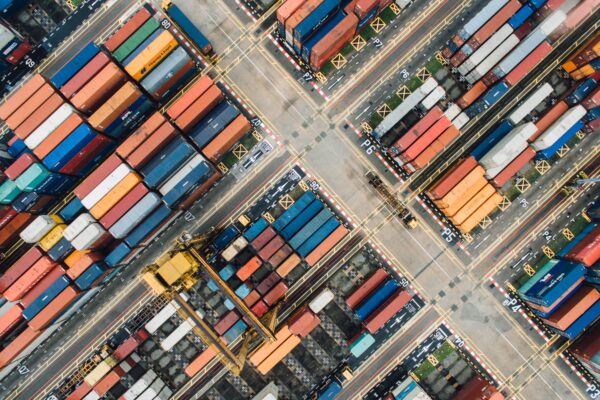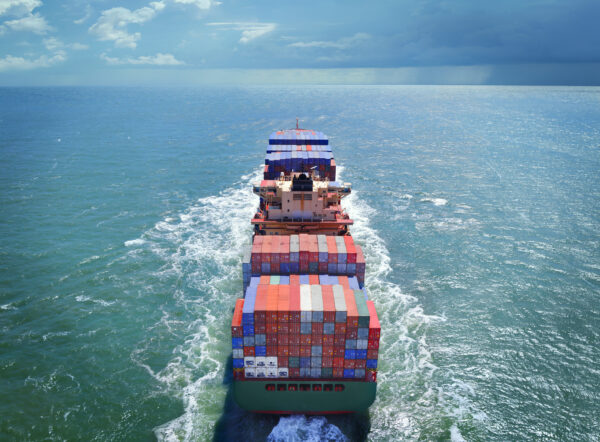Transport Update 19th May 2021
May 19, 2021
Scroll to find out more
May 19, 2021
Scroll to find out more
| Rates | Rate increases continue with announced GRI by Hapag Lloyd of $3000/40’ from East Asia to West Coast US from 15th June. |
| Capacity | Enforceable contracts done through platforms such as NYSHEX now represent 39% of the volume, compared to 1% last year. This means contracts moving on these conditions have access to space and leaves the rest of the market to fight for the rest, putting pressure on the spot rates market. |
| Ports | The latest data from the stock levels in the USA indicates that the pace of demand is high and stock are still low driven by increased demand. The record volumes in the US West Coast ports are a good indication of the same. |
| Rates | Rate increases continue for June, with some carriers indicating a continued trend of increases. Next week we will be able to provide more information as to what these increases will look like. |
| Capacity | Blank sailings expected for June are not showing any improvements over May, with similar weekly capacity being removed. This means the space pressure is expected to continue. |
| Equipment | The equipment situation has not improved massively either from last week and affects mostly the 40’ market. There is general shortage across carriers with some pockets of equipment available here and there as below. |
| Carriers | Ports with 40GP equipment |
|---|---|
| Hapag Lloyd | Shanghai, Yantian |
| Maersk | Nanjing, Xiamen, Nansha, Hong Kong, Shantou |
| ONE | Yantian, Shanghai |
| MSC | Shanghai, Ningbo, Yantian |
| EMC | Yantian, Shekou, Ningbo |
| OOCL | Yantian, Shanghai, Ningbo |
| COSCO | Yantian, Shanghai, Ningbo |
ZIM, Hyundai, CMA-CGM and Yang Ming with shortages across all ports.
| Carriers | Ports with 40HC equipment |
|---|---|
| Hapag Lloyd | Shanghai |
| Maersk | Hong Kong |
| ONE | Shanghai |
| MSC | Shanghai |
| OOCL | Yantian, Shanghai, Ningbo |
| COSCO | Shanghai, Ningbo |
ZIM, Hyundai, CMA-CGM, Evergreen and Yang Ming with shortages across all ports.
| Rates | No further rates increases have been announced but we are yet to see what the carriers will do for the trade lane between North Europe and US. |
| Ports | The last Alphaliner study done on this trade indicates how it has been neglected in terms of increased capacity when compared to other bigger trades like the Europe to Asia or the Transpacific. In essence this is a behaviour of the carriers in allocating their assets to more higher paying routes. The limited addition of capacity has meant that the space pressure caused by the boom of US imports has come later to this market, which is likely to push the prices up. There is now a plan to phase in bigger vessels in this trade by carriers, but such phasing in will imply a short term reduction in available services. According to news sources, the 2M’s North Europe-USEC TA4/NEUATL4 service remains suspended since its withdrawal in April 2020 and has been partly compensated by larger ships of up to 8,000 TEU in the other North Europe-US loops. As for THE Alliance they will upgrade their AL3 service by replacing 3,237 teu ships with 7,323 teu vessels, but at the same time close its AL1 loop, which deploys 3,860 TEU vessels, at the end of July. |

Rapid Covid test packs have been driving the global air freight market out of China for the past two months. The packs have – along with lack of capacity, of course – been driving market rates. But with the world now becoming more saturated with Covid tests, shops re-opening in Europe and high consumer demand in the US, the market is shifting again.
Air Freight rates from Hong Kong to North America took off in April as a combination of capacity shortages and rising demand hit the market. Baltic Exchange Air Freight Index (BAI) figures show that in April the average price on services from Hong Kong to North America increased by 54.7% compared with a month earlier to $8.48 per kg.
While some seasonal uplift in pricing is expected at this time of year, this is far above the increases recorded in 2018 and 2019 (last year was affected by the PPE crisis). This was in part driven by Cathay Pacific reducing cargo capacity from Hong Kong due to stricter crew quarantine rules, which have since been relaxed. A wave of consumer spending in the US – supported by government stimulus programmes – and low inventory levels was driving the rate increases.
Meanwhile, April average rates from Frankfurt to North America declined by 7.2% on March to $4.13 per kg. However, prices remain elevated. Stallion said that this is driven by vaccine cargo and a persistent lack of passenger volume.
On services from Hong Kong to Europe, prices in April also increased compared with a month earlier, although not to the same extent as the on transpacific and more along usual seasonal lines. BAI figures show that rates in April from Hong Kong to Europe increased by 13.8% compared with March to $4.61 per kg. Stallion said that rates on the trade are in part driven by the Suez Canal blockage in March. Looking forward, Chan said that carriers could divert capacity from Asia-Europe to the transpacific to chase higher prices, which has the potential to then drive up Asia-Europe rates.
| Availability | Availability is steadily returning to the market following caution from carriers over border situations. |
| Rates | Prices have increased slightly following local lockdowns in Turkey and limited availability from Italy. |
| Customs | Customs clearances are still the main bottleneck in road transportation booking, with clearances taking multiple days. |
The information that is available in the Weekly Market Update comes from a variety of online sources. Click below to learn more about how Zencargo can help make your supply chain your competitive advantage.

In Focus: Tensions in the Middle East continue Over the past week, tensions hav...

In Focus: A market outlook Rolf Habben Jansen, CEO of Hapag Lloyd, anticipates...

In Focus: Carriers announce GRIs in April Following the Chinese New Year holida...